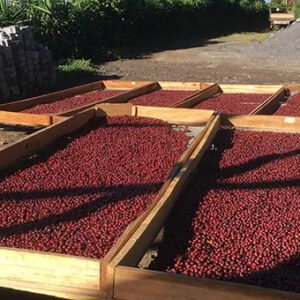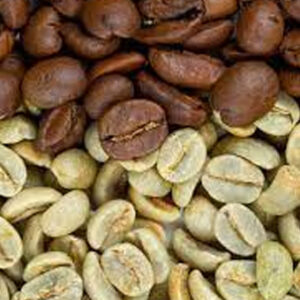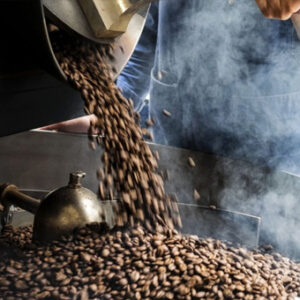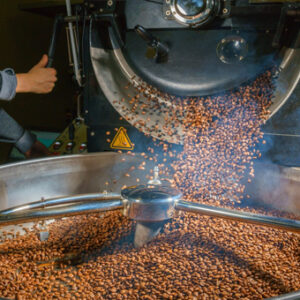The journey of coffee from bean to cup involves a series of meticulous processes that bring out its Flavors and aromas. Let’s explore the steps involved in this captivating voyage:
1. Plantation: Coffee seeds are planted in nurseries, nurtured until they are strong enough for permanent planting. Coffee trees typically take 3 to 4 years to mature and start bearing fruit.

Plantation
2. Harvesting: Ripe coffee cherries, which turn bright red, are selectively picked either by hand or using machines. There are two primary methods of harvesting: strip picking (where all cherries are removed at once) and selective picking (where only ripe cherries are harvested individually).

Harvesting
3. Processing: After harvesting, the coffee cherries need to be processed to extract the coffee beans. There are two main processing methods:
A. Wet Processing: This method involves removing the outer skin and pulp of the cherries, fermenting the beans, and washing them to remove any remaining residue.

Processing
B. Dry Processing: With this method, the whole cherries are dried in the sun until they become dry and brittle. The dried cherries are then mechanically hulled to extract the beans.

Dry Processing
4. Sorting and Grading: The processed beans go through sorting and grading to separate them based on size, shape, and quality. This ensures consistency and quality in the final product.

Sorting and Grading
5. Roasting: The green coffee beans are roasted to bring out their Flavors and aromas. Roasting temperatures and durations vary, resulting in different roast levels and flavour profiles.

Roasting
6. Grinding: The roasted coffee beans are ground to the desired consistency based on the brewing method to be used.

Grinding
7. Brewing: Ground coffee is brewed using various techniques such as pour-over, espresso, French press, or drip brewing. This involves combining the coffee grounds with hot water to extract the Flavors and create the final cup of coffee.

Brewing
Each step in this process contributes to the overall flavour, aroma, and quality of the brewed coffee, making it a delightful beverage enjoyed by many around the world.
